
The economy of the Iberian civilization
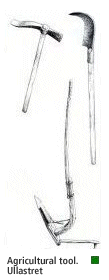 The main economic activity was the agriculture of cereals. The most commonly grown sorts were wheat, oats, barley and millet, as well as flax and legumes (lentils, broad beans and peas).
The main economic activity was the agriculture of cereals. The most commonly grown sorts were wheat, oats, barley and millet, as well as flax and legumes (lentils, broad beans and peas).
They probably practised alternation between cultivation of cereals and legume plants to get a richer soil. Whatever the case, we cannot be sure whether the olives, hazelnuts, figs, blackberries or acorns found in the Iberian villages came from cultivated trees. They could also be picked products like mushrooms, asparagus, truffles, aromatic herbs, reeds and esparto, which were used to top up the family economy, either by contributing to the alimentary diet or in the manufacture of pots.
The cultivation of wine fields, known after the arrival of the Greeks on our coasts, had only very slight importance before Romanization.
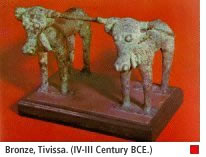 The second most important economic activity was cattle raising, the most used animals being goats and sheep, pigs, bovid, horses and the dog – there are doubts about whether the pig was a domesticated specimen or the wild boar.
The second most important economic activity was cattle raising, the most used animals being goats and sheep, pigs, bovid, horses and the dog – there are doubts about whether the pig was a domesticated specimen or the wild boar.
It must also be considered how important the sheep’s wool and milk products were for the family economy. So the ox and the horse were abig help for agricultural work. They only killed old animals, and there was not an abundance of meat in their diet. However, the meat diet could be supplemented by hunting: wild boars, deer, rabbits, birds, aquatic birds, goats… 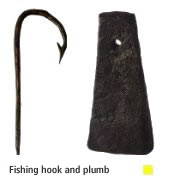
The presence of fishing hooks and weights in villages at the coast demonstrate fishing activity, which was also present near rivers, as we know from fish-bones found in villages inland. The fish diet was complemented by mussel-collecting.
The presence of iron scoria and ovens in many villages is evidence of the existence of production of manufactured objects like agricultural tools with very similar shapes to those still being used today: billhooks, forks, hoes, rakes, weeding hoes, ploughs, bills, axes and so on, as well as weaponry and objects for ornamentation. Some of these shapes tell us that as well as dry farming they also did horticultural farming to get vegetables.
Over the course of time each profession became specialized: the blacksmith, the potter, etc. However there always remained a domestic craft carried out by the women. It basically comprised of the making of clothes for the household and pottery for the kitchen, which was hand thrown, while table pottery was made of much more finer clay, and made on a potter’ s wheel then decorated with red or white, mostly made in specialized workshops. We also must remember that textile activity, apart from clothes, included making sacks, boat sails, pillow cases, carpets and, with the esparto, soles for espadrilles. 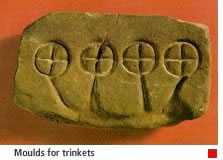
Iberian tribes exchanged goods between the different peoples within their region and with foreign merchants who had settled on the coast. Local trade was based on manufactured or raw material they had a surplus or a shortage of. 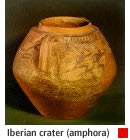
Foreign trade was done in those products which interested the Greeks of Empuries and Roses: cereals, metals, leather, clothes and maybe slaves. In exchange they received luxurious pottery for wine drinking, decorated with mythological scenes, weaponry, jewellery, perfumes or fine cloth.
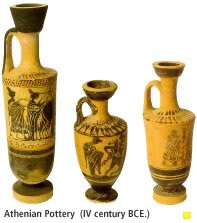 This trade is mainly known about because of the recipients used for transporting these products: small amphoras of crystal paste for perfumes, pottery amphoras for wine and oil.
This trade is mainly known about because of the recipients used for transporting these products: small amphoras of crystal paste for perfumes, pottery amphoras for wine and oil.
The Greeks could also mediate in the distribution of products from various origins: Punic or Carthaginian objects coming through Ibiza (Ebussus), others proceeding from the Celtic area in what is now South and Central France could arrive through Marseille, and still others like fine table pottery, varnished in black, came from the South of Italy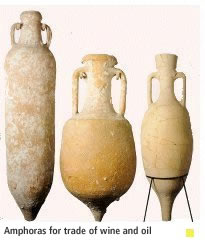 .
.
The Greeks could also mediate in the distribution of products from various origins: Punic or Carthaginian objects coming through Ibiza (Ebussus), others proceeding from the Celtic area in what is now South and Central France could arrive through Marseille, and still others like fine table pottery, varnished in black, came from the South of Italy.
others proceeding from the Celtic area in what is now South and Central France could arrive through Marseille, and still others like fine table pottery, varnished in black, came from the South of Italy.